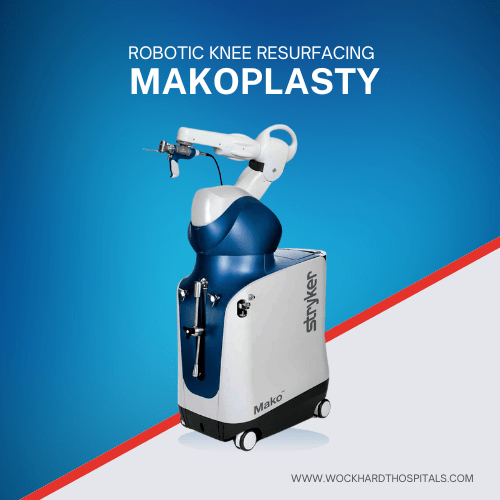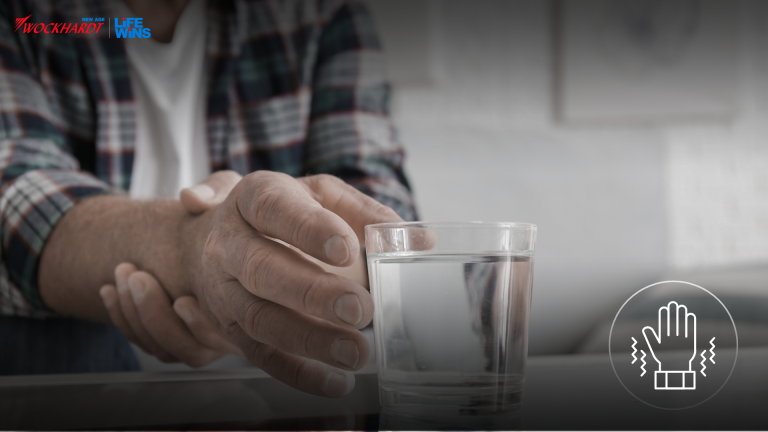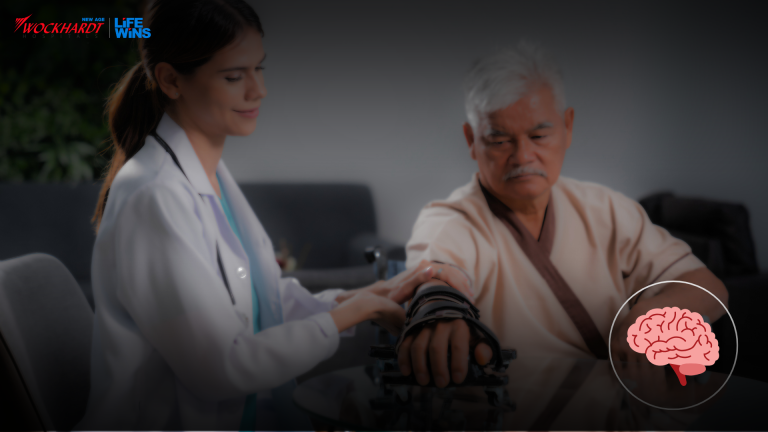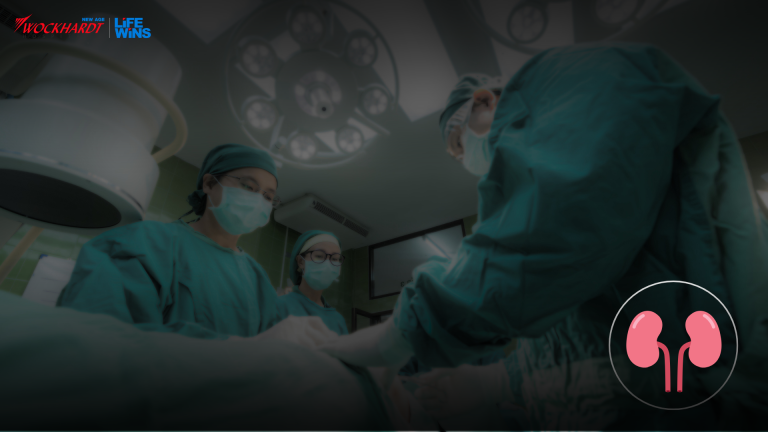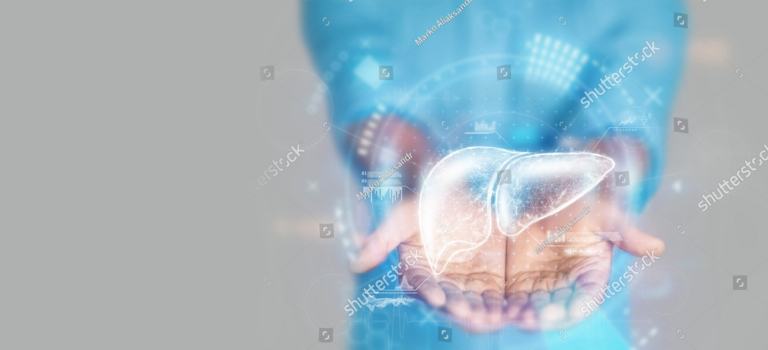Life of a Dhaba worker saved in Wockhardt Hospitals, Nagpur
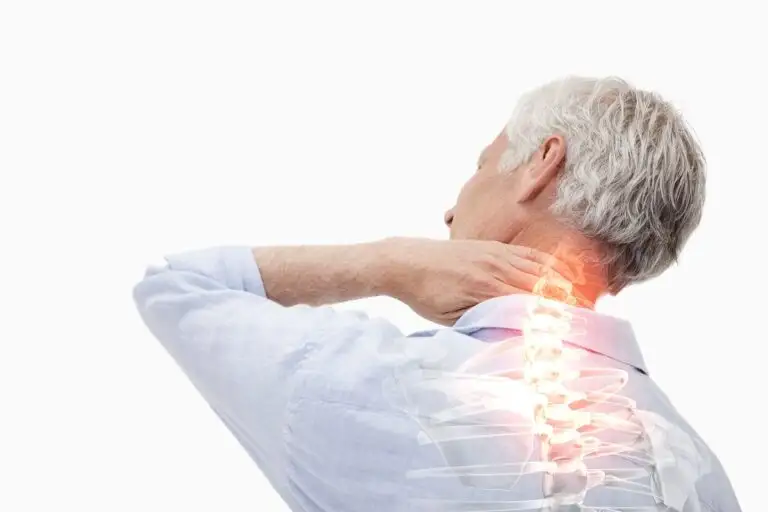
The life of a Dhaba worker was saved in Wockhardt Hospitals, Nagpur after a complex surgery was performed on him by Dr. Priyesh Dhoke, Consultant- Spine Surgery. To feed a family of six, this patient toiled and worked in a Dhaba in Madhya Pradesh. One bad night at around 3 a.m. while making tea for a truck driver his leg slipped over a log of wood and his cervical spine(neck) was injured to cause him paralysis in hands and legs. Unable to sit or stand after fall he called for help and rushed to Wockhardt Superspeciality Hospitals in Nagpur. The patient was brought to the Emergency department of the hospital where he was given primary life-saving treatment. Dr. Priyesh Dhoke saw this patient in an emergency. “This was a case of traumatic spinal cord injury with paralysis”, said Dr. Dhoke. “His X-rays, MRI scans were done and emergency medicines were started to reduce the swelling of the traumatic spinal cord. We convinced the relatives and patient for emergency spine surgery”, he added. Emergency spinal cord decompression surgery helps to reduce further damage to the spinal cord in such cases, says Dr. Priyesh Dhoke. His experience with emergency decompression surgery is promising. Successful spine surgery was performed by Dr. Priyesh Dhoke and his team, early aggressive physiotherapy and rehabilitation were started. The patient showed promising signs of recovery immediately after surgery such as hand grip, hand movements, leg movements and within two months follow up we were happy to see his near-complete recovery and he started back his job. Spinal cord injuries are very serious injuries where the patient loses power in hands and legs after an accident or trauma. Every minute counts in such a situation. Urgent diagnosis, treatment, and emergency surgery have a definite role. We at Wockhardt hospitals Nagpur have all facilities like emergency medical care, CT scan, MRI scan, ICU all under one roof which saves time and an excellent team to fast track in such critical situations. We are also equipped with world-class operating theatre conditions to deliver the best possible care to our patients says Dr. Priyesh Dhoke. This will be memorable for a lifetime as a paralyzed common man starts walking and working again due to his trust in medical care and us. Dr. Priyesh Dhoke, Consultant- Spine Surgery,Wockhardt Super Specialty Hospital, Nagpur
What is Brain Hemorrhage & it’s Treatment?

Subarachnoid haemorrhage (SAH) or ‘brain haemorrhage ” is a very serious life-threatening neuro-surgical emergency condition requiring immediate diagnosis, transfer to a specialised neuro-care centre and intensive (ICU) management. This condition is often seen in both male and female patients, particularly in middle-aged groups. The patient usually experiences a sudden severe headache (worst ever headache in life) followed by loss of consciousness or seizures. The cause of haemorrhage is usually due to the rupture of an aneurysm in the brain. What is an Aneurysm? In some individuals, there is a defect in the walls of the blood vessels of the brain. This balloon-like outpouching from the wall is the weakest point of rupture. It is like a bomb in the brain which on explosion throws a significant amount of blood under pressure causing haemorrhage within the brain. This leads to a sudden increase in pressure in the brain (ICP) and can cause brain death. 30% of such patients with severe haemorrhage die before reaching a hospital. Almost 50% may lose their life after reaching the hospital in the first 24 hours. Diagnosis of SAH CT scan of the brain gives a prompt diagnosis. Details of the aneurysm like its size, location etc can be obtained further by doing a CT angiogram or a Digital subtraction angiography (DSA). Management of an Aneurysmal SAH Essentially involves management of the initial bleed, its complications and sequelae and also preventing further re-bleed. The haemorrhagic blood may disturb the circulation of brain fluid (CSF) causing the ventricles (waterbags) in the brain to increase in size – a condition called hydrocephalus. This often requires a CSF diversion procedure (EVD)involving the placement of a small tube into the ventricle by drilling a burr hole in the skull and draining the CSF externally. Aneurysmal blood can also cause irritation to blood vessels which can contract in size (vasospasm) and reduce the blood supply to the brain. After initial stabilisation, the aneurysm should be secured to prevent a re-bleed. The aneurysm can be closed by either of the two procedures The clipping procedure involves opening of the skull (craniotomy) and direct visualisation, dissection of the aneurysm under a microscope and occluding its neck by applying a titanium clip while coiling is an endovascular procedure and does not involve a craniotomy. Management of an aneurysmal haemorrhage is very complex and challenging. Results depend on the severity or grade of haemorrhage, age, other comorbidities and the neurological condition of the patient at the time of arrival at the hospital. Prompt shifting of such patients to hospitals with neuro-care facilities may result in saving life and better prognosis. Dr Ashwin BorkarConsultant NeurosurgeonWockhardt Hospital
Emerging Technologies Aid in Managing Cerebral Palsy

Technology is helping every aspect of human lives. For cerebral palsy patients, simple apps are being developed, which help to improve their communication if they are facing speech problems. High-end medical technology in the form of computerised gait analysis, as well as special implantable medication pumps, are helpful for patients with cerebral palsy. On February 28, 2022, news broke out about the death of Zain Nadella the son of Microsoft Executive Chairman and CEO, Satya Nadella. Zain was only 26 six years of age at the time of his passing. Zain was born with cerebral palsy (CP). CP is a congenital disorder of movement, muscle tone, the posture that occurs due to the damage caused to the brain and accounts for the most common motor disability in childhood. According to the Centers for Disease Control and Prevention (CDC), in the year 2000, the prevalence rate of cerebral palsy in the US was 3.1 per 1000 children. A report by the Indian Institute of CP states that in India approximately 33,000 people suffer from cerebral palsy. They also report that when looking at the worldwide incidence rate, one in 500 born babies suffers from cerebral palsy. Early Detection Can Prevent Morbidity Currently, there are no definitive tests to detect CP, but good nutrition, proper medical care and rubella vaccination before pregnancy can prevent the chances of the child developing cerebral palsy. There are also many soft signs of CP which can be picked up at early stages. If these are picked up on time and appropriate treatment is instituted, morbidity can largely be prevented. “Early detection of cerebral palsy is crucial for early initiation of therapy which can significantly improve motor and cognitive outcomes in these children. Regular checkups by child healthcare nurses and paediatricians can help in picking up these patients early. This is helped by using various motor assessment or performance scales and neurological examination and where indicated (based on clinical evaluation) MRI(BRAIN),” said Dr Prashant Makhija, Consultant Neurologist, Wockhardt Hospital. Morbidity of Cerebral Palsy with Other Disorders Research is still ongoing for the treatment of CP, multidisciplinary treatment is currently most effective in managing CP. Dr Vaidehi Dande, shared, “Early intervention therapy improved the outcome to a great extent. This involves identifying babies at risk of CP as early on as possible and facilitating their brain function by stimulating special senses. This involves the provision of auditory, visual, smell and tactile stimulation. Facilitating postures and regular physiotherapy goes a long way in helping these children gain milestones faster. Hearing deficits can be dealt with using cochlear implants. Such children also commonly develop seizures and epilepsy and a lot of new drugs can be used to control the seizures. Various orthoses and prostheses are greatly helpful in enabling these children to do their day to day activities.” Dr Nisha Deshpandey, added, “Caseness of other disorders is found more in patients suffering from cerebral palsy. Many children suffer from epilepsy and mental retardation. About 25 per cent of children with cerebral palsy might have an intelligence quotient (IQ) of less than 50. Typically, the infant or child might reach developmental milestones (like rolling over, neck control, sitting, crawling etc) later than other children. Autism spectrum disorder is also very prevalent among children suffering from cerebral palsy. Other mental health problems are also highly prevalent among them. Assistive Tech Therapies in Treating CP Technology is helping every aspect of human lives. For cerebral palsy patients, simple apps are being developed, which help to improve their communication if they are facing speech problems. High-end medical technology in the form of computerised gait analysis, as well as special implantable medication pumps, are helpful for patients with cerebral palsy. Elucidating in detail about these assistive technologies, Dr Saurabh Chopra, mentioned, “Besides children with very severe damage or malformation of the brain, most patients with cerebral palsy benefit significantly from rehabilitation programmes and therapies including neurodevelopmental therapy. Although stem cells may hold promise as a research modality to prevent cerebral palsy currently there are no benefits of using stem cells in children already affected by cerebral palsy.” “Technology in cerebral palsy is helpful mostly in rehabilitation. They have the potential to improve the ability of individuals with cerebral palsy to perform activities and increase participation. Robotics and virtual reality may improve movement by maximising exercise dose, providing feedback and motivating users. Augmentative and alternative communication technology is facilitating communication. Robots can help with self-care and provide motivation and instruction in rehabilitation programmes. Mobile applications can provide educating resources,” added Dr Darpan Thakre. Commenting on how newer therapies are proving to be beneficial for children afflicted with CP, Dr Usha Mallinath, said, “Smaller, more portable rehabilitation technology has the potential to improve the ability of individuals with cerebral palsy to perform activities and increase participation. The application of advanced technologies in paediatric rehabilitation to improve performance and enhance everyday functioning has shown considerable promise. Robotics and virtual reality may improve movement by maximising exercise dose, providing feedback, and motivating users. Augmentative and alternative communication technology is facilitating communication. Robots can help with self-care and provide encouragement and instruction in rehabilitation programmes. Mobile applications can provide education and resources. Many parents report that the condition of the child deteriorates with time. Cerebral palsy might be mistaken with other progressive neurological disorders because of the apparent change in pattern and severity of movement problems. However, in cerebral palsy, the underlying neurological problem does not worsen. Most of the children with cerebral palsy are born with the condition. However, the symptoms might not necessarily be visible at birth. During the first few months of life, the symptoms may get more noticeable. Good nutrition, regular antenatal visits, hospital delivery, availability of neonatologists at the time of delivery please ensure the adequacy of feeding after birth and providing a clean and hygienic environment to the newborn. Prevention of prematurity and low birth weight, good medical and neonatal intensive care facilities to provide medical care for sick babies. Particular mention of
Covid Side-Effects in Women: Why Women Suffer Longer Than Men?
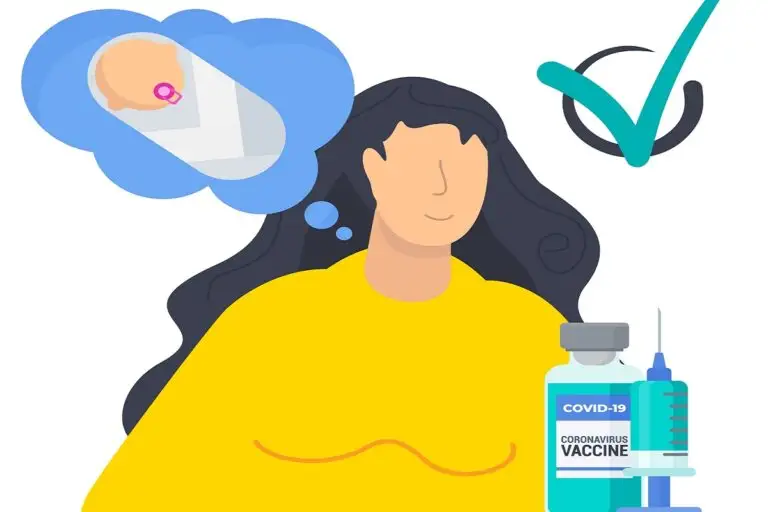
Covid side-effects in women: While women are more likely to face sleep troubles, anxiety, menstrual irregularities, fungal infections and hair loss, men usually experience breathlessness post Covid. Covid Side-Effects in Women: If you and your partner have recently recovered from Covid-19, there are chances that both of you would have a different post Covid story to tell. Many studies in West have concluded that the symptoms and severity of post Covid disease have a clear demarcation for men and women. While women are more likely to face sleep troubles, anxiety, menstrual irregularities, fungal infections and hair loss, men usually experience breathlessness post Covid, say studies. According to certain studies, while the Covid symptoms largely remain the same for men and women to begin with, the latter faced more extensive ones post the disease which also take a little more time to recover as compared to men. As per a Lancet article published in November 2020, while globally Covid-19 case fatality rates are higher among men than women, in a few countries, such as India, fatality rate is higher in women. “The multi centric study in Spain done in 2021 showed that women above the age of 45 years are more prone to develop post covid disease. Also, the symptoms in women were very distinct such as sleep disturbances, palpitations, anxiety, headache, fatigue, low blood pressure and hair loss as compared to men who report breathlessness as their primary symptom,” says Dr Charu Dutt Arora. “Women have been the victim of this virus as well. However, they have been lucky enough to have less morbidity and mortality. Having said that, they are no exception to post covid syndrome. We have seen menstrual irregularities, dysmenorrhea and menorrhagia in maximum of our patients. Also,we have noticed hair loss lasting for months, especially in younger age group,” says Dr Honey Savla, Consultant Internal Medicine, Wockhardt Hospital, Mumbai Central. Elaborating on other post Covid symptoms women usually face Dr Savla says, “they have been suffering from loose motions for longer time. We have noticed highly deranged blood sugars in many individuals. There are complaints of easy fatiguability and breathlessness lasting for longer time. Also I have seen increase in genital fungal infections since second wave,” says the expert. Dr Arora says it happens because at a molecular level, it has been observed that the IL-6 level is higher in females during their post-Covid period. The expert suggests that it is imperative for healthcare workers to customise the treatment in long Covid on the basis of sex of the patient. Studies also suggest that women suffer more from post Covid symptoms than men and also take longer to recover. “Though there are small studies to support the fact but females are more affected with post covid symptoms compared to males. As per the studies conducted at Mayo Clinic, symptoms of Covid-19 were similar to begin with in both genders. But post covid 19 symptoms – which are symptoms developing after 2 months of infection – were more common in females which took slightly longer duration to recover,” says Dr Santosh Kumar Jha. Most Common Post-Covid Symptoms in Male and Females are Following: Dr Honey Savla, Consultant Internal Medicine, Wockhardt Hospital, Mumbai Central. Source: https://www.hindustantimes.com/lifestyle/health/covid-side-effects-in-women-why-women-suffer-longer-than-men-expert-take-101646833457395.html
Why It is Dangerous To Suppress a Sneeze

Sneezing may be unpleasant, but you may face some potential complications if you suppress it. During the Covid-19 pandemic, one dare not sneeze in public, not even with their mask on! Isn’t it? But Covid-19 or not, some people just generally try to hold their sneeze in if they are with someone or in a professional space. So, sometimes stifling a sneeze may seem appropriate, but a study recently published research report showed the damage that suppressing a sneeze can do. If simply put, holding your sneeze is dangerous because of the energy it produces. A sneeze generates a significant pressure and when you hold the pressure, it can cause a rupture of your eardrums, irritation of the throat, and even in severe cases, rupture of blood vessels in your eyes or brain. 1. Eardrum ruptures Sneezing is capable of causing middle and inner ear damage, including a ruptured eardrum. “If you tend to hold in the high pressure that gets built up in your respiratory system before sneezing then some air can go into your ears too. This pressurized air further goes into the tube in each of your ears that connects to the middle ear and eardrum that is known as the Eustachian tube. Thus, the pressure can lead to the rupture of your eardrum and there will be hearing loss,” Dr Pritam Moon, consultant physician, Wockhardt Hospitals, Mumbai, tells HealthShots. 2. Infection Another reason why you should never avoid sneezing, especially if you are suffering a cold, is to release the yellow nasal discharge from the body. Dr Moon says, “Sneezing allows you to clear the nose of anything that shouldn’t be present there, including the bacteria. Holding a sneeze leads to the redirection of air back into your ears from your nasal passages that carry bacteria or infected mucus to your middle ear inviting an infection. You may be required to take antibiotics to manage that middle ear infection.” 3. Broken ribs “When you hold a sneeze, the high-pressure air is forced into the lungs with a lot of force, and this can lead to the breaking of your ribs,” says Dr Moon. Why do we sneeze? Sneezing is a mechanism you use to clear your nose. When foreign particles like pollen, dust, or smoke enter your nose, they may interact with your nasal passage. If this happens, an electric signal gets sent to your brain to inform it that it’s time for a sneeze. The act of sneezing forces water, mucus, and air from your nose quickly. Although risks of holding in a sneeze are low, still there are chances that it could lead to consequences. So never ever hold on to your sneeze! Dr Pritam Moon, Consultant physician, Wockhardt Hospitals, Mumbai Source: https://ke.opera.news/ke/en/health/e016dbf7908c1072e164b526687e77fd
Celebrates International Women’s Day in Nagpur
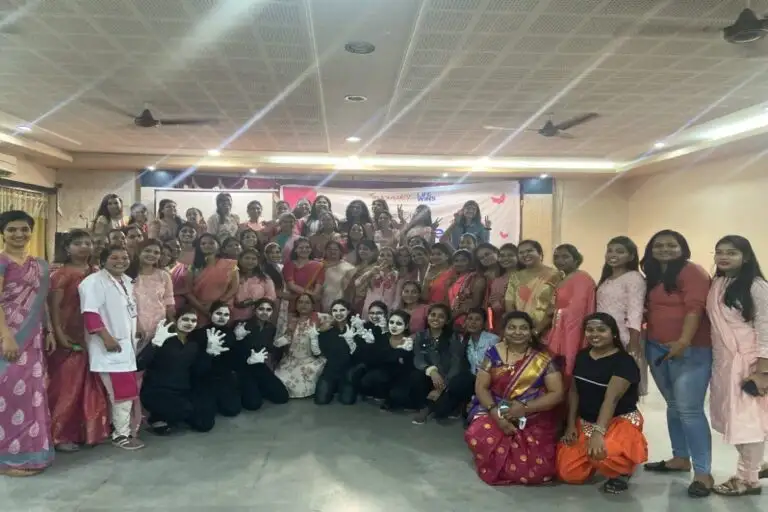
Wockhardt Hospitals in Nagpur celebrated International Women’s Day through its campaign- “I am fearless”. This year’s theme for International Women’s Day, “Women in leadership: Achieving an equal future in a COVID-19 world”, celebrates the tremendous efforts of women and girls around the world in shaping a more equal future and recovery from the COVID-19 pandemic. Women face several personal and professional challenges in their day-to-day lives. To help them manage this pressure, Dr. Sushil Gawande, Consultant- Psychiatry conducted a lecture. This was followed by a lecture by Dr. Riya Mangtani, Consultant- Gynaecology on “Hormonal changes in women in different phases of life”. The event was concluded by various cultural performances. To book an appointment call: 0712-6624100 Source: https://thelivenagpur.com/2022/03/09/i-am-fearless-wockhardt-hospitals-nagpur-celebrate-international-womens-day/
Wockhardt Hospitals, Mumbai Introduces A Path-breaking Treatment for Diabetic Foot Ulcer
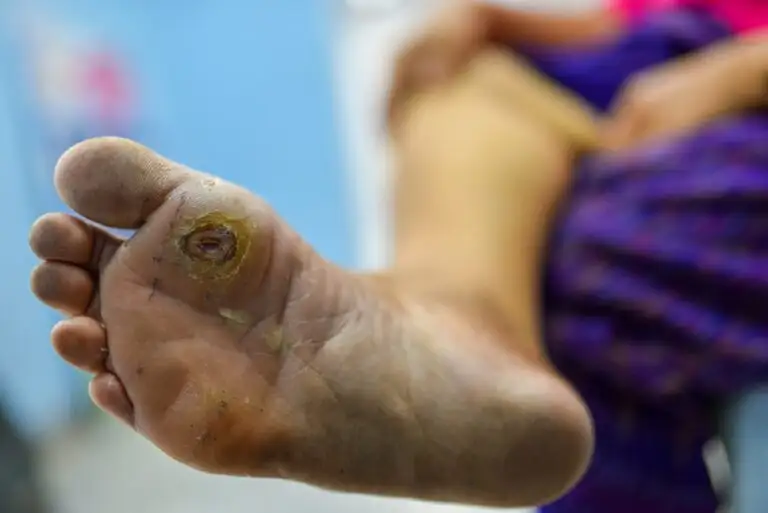
Wockhardt Hospitals launches Diabetic Foot Ulcer clinic (DFU) to reduce chances of foot amputation due to Diabetes by using “Growth Factor Concentrate Therapy” (GFC). This is a path breaking therapy where growth factors derived from the patient’s own platelets are further purified and used as an acellular growth factor giving consistent quality and quantity. This advanced therapy has a high scope of preventing diabetic foot amputation and the clinical studies has shown resounding success. India has approximately 77 million diabetic patients – the second highest in the world. DFU is a full-thickness wound penetrating through the skin located below the ankle in a diabetic patient. Around 12% to 15% of diabetic patients suffer from DFU at least once in a lifetime. With age and advancing disease, the risk for limb amputation and foot ulcers is high. The mortality rate for people who undergo lower extremity amputation due to a DFU remains alarming, more than half of people with a major leg amputation will be dead in 5 years. During the launch of DFU clinic, Dr. Parag Rindani, CEO, Wockhardt Group of Hospitals (Maharashtra) said “This the first of its kind multi speciality therapeutic approach which is being used for diabetic foot ulcer treatment, because it has been augmented by Growth Factor Concentrate, and supported by all conventional therapies and superspecialists. As a group this team has come together to be able to bring relief to patients suffering from DFU.” Dr Behram Pardiwala, Director, Internal Medicine, Wockhardt Hospitals, Mumbai Central says, “India is the second largest diabetic country in the world and diabetes as we all are aware is a silent killer. People with diabetes develop corn, callouses, rough skin which further develop into full-fledged ulcers. Such patients should immediately seek medical assistance to avoid deeper ulceration and gangrene. Our team of researchers have successfully used GFC on patients to prevent diabetic foot amputation. We have used this therapy on about 50 to 52 patients so far who had come to us with Stage 1 (Foot at Risk) and Stage 2 (Ulcerated Foot) and Stage 3 (Crippled foot) wound or ulcer. Using a multidisciplinary approach and GFC, we have got astounding results. This therapy helps to avoid amputation which is the worst form of trauma for any diabetic patient.” During the launch of this clinic, Mr. Vijay Sharma, Director, Regenerative Medicine, Wockhardt Hospitals said,”Chronic wounds have an enormous impact on the quality of life and health of patients and their families but are often an underestimated malady. By stimulating the body’s own repair mechanism, regenerative medicine offers the promise to regenerate chronic non healing wounds using autologous growth factors derived from the patient’s own blood cells. Growth Factors are type of molecules that not only stimulates cell growth as the name suggests but also affect several other aspects of cell structure and mechanism. The activation of platelets releases several growth factors, and our research has demonstrated successful results in healing ulcerative wounds.” According to Dr. Shraddha Deshpande, Consultant Plastic and Reconstructive Surgeon, Wockhardt Hospitals, Mumbai, “India lacks awareness not only in diabetes but also, its relationship with other complications associated with it. According to WHO every 30 seconds, a limb is lost in the world due to diabetes. There are 4 stages of diabetic foot ulcer development and usually Indian patients are coming to us in Stage 3 and Stage 4 state. Our clinic aims to raise awareness regarding DFU so that they can be identified and treated earlier”. With the use of GFC, wounds have healed rapidly as compared to conventional ways of treatment, many a times preventing the need for surgery. GFC is a high-quality patient care therapy that helps to prevent amputation amongst DFU patients in terms of having a negative impact on a patient’s quality of life and the burden on the healthcare system. Source: https://www.konexionetwork.com/NewsDetails.aspx?newsid=b1b43207-c7bb-4109-b583-db6e1ce25893
Crash Diet and Weight Loss Supplements Are Dangerous Cocktail for Cardiac Arrest

The legendary Australian cricketer Shane Warne passed away at 52, on Friday due to a suspected heart attack. Although Erskine talked about Warne’s weight loss stories, no direct correlation was found between his crash diet and his sudden death. Unfolding the details, Warne’s manager, James Erskine, has told that the cricketer was on a ‘ridiculous diet’ before his untimely death. According to Erskine, Warne was on a 14-day liquid diet where he consumed nothing but fluids. He further stated that the legendary spinner had also previously followed such crash diets. Essentially, a crash diet involves diets that have you consuming a minimal amount of food. This diet may seem effective, but the moment you start to eat normally again, you will gain back the weight you lost during your crash diet. Due to the small portions, you are consuming, you will miss out on vitamins and nutrients that your body needs. Dr Manjari Chandra, told that fasting and diets are a “way to heal our bodies.” However, these terms are now being used to lose weight in a quick fashion these days. She said, “Fasting is part of our systems, so we should fast because that’s the easiest way of resetting the human body in every way. But this way of dieting to lose quick, quick weight is not the right way to do it.” What Does the Research Say? Even though crash dieting can have some positive outcomes, it can also have some potentially harmful effects on the heart as a result of an increase in heart fat level. A study published earlier stated that “Crash diets can cause a transient deterioration in heart function.” The study included 21 obese volunteers and the average age was 52 years. According to the study, after a week, the researchers noticed that the heart fat content had risen by 44 per cent. This was associated with a deterioration in heart function, 3 including the heart’s ability to pump blood. Experts’ remarks: Crash diets not advisable Experts have cautioned that a crash diet may lead to electrolyte imbalance, in turn leading to a sudden heart attack. A drastic alteration in diet and extreme weight loss measures could be dangerous even for apparently healthy individuals without a history of the cardiac ailment. Tina Sapra, RD MPH CLE, Doctor Diet, said that if someone is on a liquid diet, then the individual is lowering the blog pressure and blood sugar levels. She said, “Lower BP places the heart in the most crucial state.” Experts’ remarks: Crash diets not advisable Experts have cautioned that a crash diet may lead to electrolyte imbalance, in turn leading to a sudden heart attack. A drastic alteration in diet and extreme weight loss measures could be dangerous even for apparently healthy individuals without a history of the cardiac ailment. Tina Sapra, RD MPH CLE, Doctor Diet, said that if someone is on a liquid diet, then the individual is lowering the blog pressure and blood sugar levels. She said, “Lower BP places the heart in the most crucial state.” She explained that crash dieting involves lowering the intake of nutrients, which means missing all the three macronutrients, carbohydrates, fats, and proteins. “Since, the blood sugar drops, it leads to cardiac arrests.” “Heart mostly fails due to aerated cholesterol which is diet-related or low BP, hence, crash diets can lead to heart attacks,” she added. She, relating crash diets to heart attacks, also said, “If you are on a 14-day liquid diet, the liver has to work harder leading it to higher cholesterol level”, which can increase the chance of heart attack. Dr Amreen Sheikh, a renowned Dietitian in Mumbai and is currently practising at Wockhardt Hospitals, elaborates that it also depends on the other activities is been followed with the diet as it directly affects cardiac activity. She said, “Crash diets are not advisable because it lacks the nutrients a human body needs on a daily basis.” She also said that a crash diet and medications along with it, is a dangerous cocktail for a cardiac arrest. “Individuals who follow this diet, usually end up taking a lot of supplements and steroids to cover up for the nutrient deficiency which can also be a reason for heart attacks. So, it is not only the diet but also, what an individual adds to it,” she added. Dr Amreen Sheikh, Dietitian Wockhardt Hospitals Source: https://www.news9live.com/health/crash-diet-and-weight-loss-supplements-are-dangerous-cocktail-for-cardiac-arrest-experts-157635
Rare Hybrid Revascularization procedure conducted in Wockhardt Hospitals, Nagpur
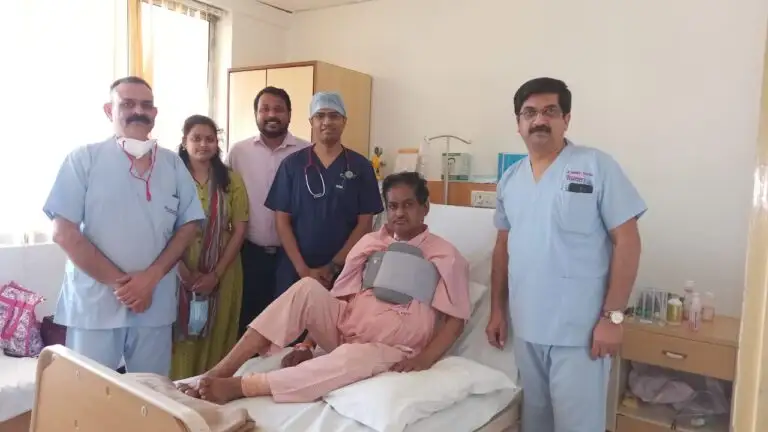
Nagpur: In a unique case, a 60-year-old patient undertook a procedure called Hybrid revascularization (opening of blocked Arteries) in Wockhardt Hospitals in Nagpur. This procedure was performed by a team led by Dr. Dinesh Padole, Consultant- Cardiology, and Dr. Sameet Pathak, Consultant- Cardiac Surgery. Hybrid revascularization refers to complete or near-complete revascularization using a combination of angioplasty and CABG or vice versa (often during the same hospital stay). The patient, hailing from Nagpur, had blocked arteries to both kidneys (critical bilateral renal artery stenosis) with blockages of all three vessels of the heart (critical triple vessel coronary artery disease) with accelerated hypertension, diabetes, and acute kidney injury. “The Patients appropriate for this technique vary widely from low risk to high risk with multiple comorbidities, who intend to benefit the most after a heart-team discussion”, informed Dr. Dinesh Padole (Interventional Cardiologist and consultant in charge of the patient), who undertook this rare combination of Angioplasty and CABG on the same day. The patient was at high risk for direct CABG in view of critical bilateral renal artery stenosis as the patient had High Blood pressure which was not getting controlled with a maximum number of anti-hypertensive medications and recurrent pulmonary edema. After a Critical Assessment of the situation, the heart team (Cardiologist, cardiovascular surgeon, anesthetist, intensivist, patient’s relatives) decided to take up the patient for rare hybrid procedure-bilateral renal artery stenting followed by CABG on the same day, after explaining the critical and rare condition to patients relatives. Both the procedures (Bilateral renal angioplasty followed by CABG) were completed within six hours. Dr. Dinesh Padole (Interventional Cardiologist) and consultant in charge informed that there is a high risk of stent thrombosis (blockages) in such patients which was reduced with the use of a novel blood-thinning medication called cangrelor during and after renal angioplasty and CABG. Dr. Sameet Pathak (CVTS Surgeon) performed a CABG of the patient and informed that patient had an uneventful postoperative period. The patient has been discharged and has come for his follow-up with no complaints. Happy patients, Happy doctors!
How an Artificial Pancreas Can Be Crucial for Diabetic Patients
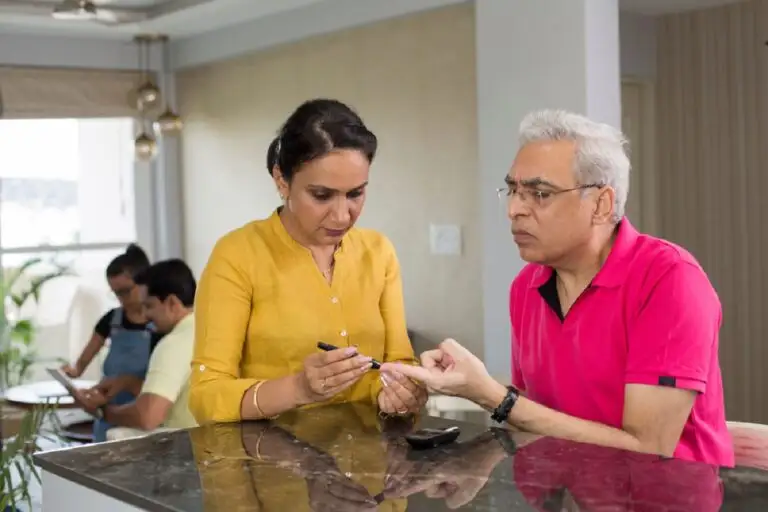
The World Health Organization (WHO) describes Diabetes as a chronic metabolic disease characterized by elevated blood sugar levels (or blood sugar), which over time can cause severe damage to the heart, blood vessels, eyes, kidneys and nerves. It also states that approximately 422 million people worldwide have diabetes, most of whom live in low- and middle-income countries, and that 1.5 million deaths are directly attributed to diabetes each year. Type 1 diabetes is an autoimmune disease in which the pancreas cannot produce enough insulin while at Type 2 diabetes, the body develops insulin resistance, resulting in abnormally high blood sugar levels. As such many diabetic patients life depends on insulin treatment, which can be given by injection or pump, to keep their blood sugar levels under control. But a new technology automated insulin delivery is attempting to mimic the role of the pancreas, paving the way for breakthrough methods of diabetes surgery and its many manifestations. Also called artificial pancreas (AP) or closed-loop systems, the technology combines diabetes Devices, namely an insulin pump connected to a continuous glucose monitor (CGM) and a smartphone program. While insulin pumps have been used since the 1980s to mimic the secretion of a healthy pancreas for patients with type 1 diabetes, “these have to be done manually multiple times a day and therefore have not lived up to expectations,” said Dr. Jothydev Kesavadev. However, the artificial pancreas automatically monitors blood sugar levels, calculates and dispenses the amount of insulin needed at different times of the day. This system helps control blood sugar levels and makes it easier for people to keep them in range. What is AP and How Does it Work? “AP consists of three parts – glucose sensor, program and pump. Continuous glucose monitor (CGM) tracks blood glucose levels every few minutes using a tiny sensor placed under the skin and wirelessly sending the information to a program. The sensor sends the necessary information to the smartphone or an insulin infusion pump. Based on the reading, the insulin pump then delivers small doses of insulin throughout the day when blood glucose is above the target range,” said Dr. David Chandy. “You know how much insulin you need and the insulin infusion pump gets a signal when insulin needs to be delivered. The insulin infusion pump then delivers the required insulin. However, values vary with expert guidance,” said Dr. Pritam Moon, Medical Specialist and Diabetologist, Wockhardt Hospital Mira Road. The Predictive Suspend system calculates blood glucose levels and stops insulin delivery before your blood sugar levels becomes too low. “Stopping insulin delivery at the right moment can help a person with type 1 diabetes avoid low blood sugar or hypoglycemia, a condition in which a person’s blood glucose level is below the target range,” said Dr. chandy The gap, however, was in automating insulin delivery — which “used to be a dream,” said Dr. Kesavadev. “Surgical methods have been tried for more than 75 years, but all of these clinical trials have failed. Automation began with the availability of continuous glucose monitoring and algorithms to control insulin delivery. Although “artificial pancreases” have been available for 10 years, automation success has only been 40-60 percent,” said Dr. Kesavadev. Why are we Talking About Diabetes Treatments? The cost of treating diabetes is similar to treating heart attacks. Kidney disease, strokes, neuropathy, blindness, amputations, mental illnesses, etc., all of which can be prevented by “proper treatment of the underlying disease”. “This is why such expensive devices are being made available free of charge in many countries, as they will prove extremely cost-effective in the long run,” said Dr. published in Therapeutic advances in endocrinology and metabolism Magazine in October 2021. In the paper mention Dr. Kesavadev, Gopika Krishnan and Viswanathan Mohan, how the diabetes community uses various technologies such as connected glucose meters, continuous glucose monitoring systems, continuous subcutaneous insulin infusion, closed circuit systems, digitization of health data and diabetes-related apps to prevent and treat the condition. The WHO also states that for people with diabetes, access to affordable treatment, including insulin, is vital to their survival. “There is a globally agreed goal to halt the rise in diabetes and obesity by 2025,” says the WHO website. In a previous interview with indianexpress.com Luke Coutinho, Holistic Lifestyle Coach – Integrative and Lifestyle Medicine and Founder of YouCare – All about YOU said that “integrating technology into diabetes management” is an excellent step in changing the face of this epidemic in our country and the world . “One thing we are constantly reminded of through our daily practice is the fact that each of us is bio-individuals, not just in terms of genes, but also in the way our bodies respond to a particular one Food or a specific ingredient reacts. This is where technology like CGMS (Continuous Glucose Monitoring System) can help us personalize our approach and tailor it to a specific individual,” he explained. What Types of AP are There? There are different types of artificial pancreatic systems, said Dr. Chandy They include: Threshold suspend and predictive suspend systems The Threshold Suspend and Predictive Suspend systems can temporarily halt or “suspend” insulin delivery when blood glucose levels drop. Threshold suspend system What is AP’s 780G? 780G is an advanced type of insulin pump that automatically monitors the insulin level to be delivered depending on food intake. “This is the first time that 780G has achieved 80 percent success in automation and many patients using it have had success with a time in range (glucose within normal range) greater than 90 percent in 24 hours”, said Dr Kesavadev. according to Dr Kesavadev, 780G is an international product from the United States. “Similar technologies have not yet reached India. It’s life-saving, especially for children with type 1 diabetes who struggle day and night to keep glucose levels in the right range,” he said. How Does 780G Work? Dr Kesavadev, who along with Dr. Arun Shankar, Gopika Krishnan and Geethu Sanal used and trained 780G in a 26-year-old person with type 1 diabetes, said that 780G automatically increases the insulin dose when






